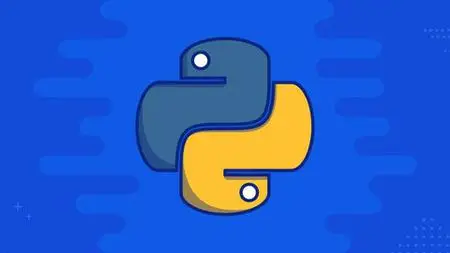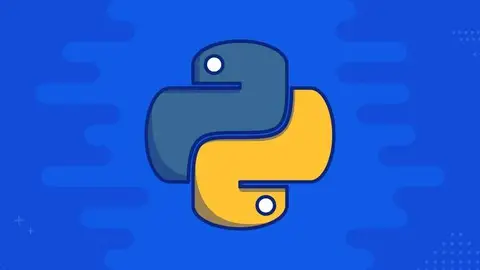Learn Python From The Scratch And Prepare With Projects
Published 2/2023
MP4 | Video: h264, 1280x720 | Audio: AAC, 44.1 KHz
Language: English | Size: 990.86 MB | Duration: 2h 50m
Published 2/2023
MP4 | Video: h264, 1280x720 | Audio: AAC, 44.1 KHz
Language: English | Size: 990.86 MB | Duration: 2h 50m
Learn Python step by step and with hands on Projects
What you'll learn
Learn Python From the scratch
Understanding Python Essentials and Concepts
Hands On projects
Practice Step By Step
Requirements
Nothing just Patience and Eager to Learn !
Description
Python is a general-purpose interpreted, interactive, object-oriented, and high-level programming language. It was created by Guido van Rossum during 1985- 1990. Like Perl, Python source code is also available under the GNU General Public License (GPL). This tutorial gives enough understanding on Python programming language.Why to Learn Python?Python is a high-level, interpreted, interactive and object-oriented scripting language. Python is designed to be highly readable. It uses English keywords frequently where as other languages use punctuation, and it has fewer syntactical constructions than other languages.Python is a MUST for students and working professionals to become a great Software Engineer specially when they are working in Web Development Domain. I will list down some of the key advantages of learning Python:Python is Interpreted − Python is processed at runtime by the interpreter. You do not need to compile your program before executing it. This is similar to PERL and PHP.Python is Interactive − You can actually sit at a Python prompt and interact with the interpreter directly to write your programs.Python is Object-Oriented − Python supports Object-Oriented style or technique of programming that encapsulates code within objects.Python is a Beginner's Language − Python is a great language for the beginner-level programmers and supports the development of a wide range of applications from simple text processing to WWW browsers to games.Characteristics of PythonFollowing are important characteristics of Python Programming −It supports functional and structured programming methods as well as OOP.It can be used as a scripting language or can be compiled to byte-code for building large applications.It provides very high-level dynamic data types and supports dynamic type checking.It supports automatic garbage collection.It can be easily integrated with C, C++, COM, ActiveX, CORBA, and Java.Python is one of the most widely used language over the web. I'm going to list few of them here:Easy-to-learn − Python has few keywords, simple structure, and a clearly defined syntax. This allows the student to pick up the language quickly.Easy-to-read − Python code is more clearly defined and visible to the eyes.Easy-to-maintain − Python's source code is fairly easy-to-maintain.A broad standard library − Python's bulk of the library is very portable and cross-platform compatible on UNIX, Windows, and Macintosh.Interactive Mode − Python has support for an interactive mode which allows interactive testing and debugging of snippets of code.Portable − Python can run on a wide variety of hardware platforms and has the same interface on all platforms.Extendable − You can add low-level modules to the Python interpreter. These modules enable programmers to add to or customize their tools to be more efficient.Databases − Python provides interfaces to all major commercial databases.GUI Programming − Python supports GUI applications that can be created and ported to many system calls, libraries and windows systems, such as Windows MFC, Macintosh, and the X Window system of Unix.Scalable − Python provides a better structure and support for large programs than shell scripting.
Overview
Section 1: Introduction
Lecture 1 Python Introduction
Section 2: Learn Python From the scratch
Lecture 2 Install Python
Lecture 3 Hello World
Lecture 4 Data Types
Lecture 5 Numbers
Lecture 6 Math functions
Lecture 7 Operator Precedence
Lecture 8 Variables
Lecture 9 Strings
Lecture 10 Types Conversion
Lecture 11 Escape Sequence
Lecture 12 Formated Strings
Lecture 13 Strings Indexes
Lecture 14 Boolean
Lecture 15 Lists
Lecture 16 List Methods
Lecture 17 Matrix
Lecture 18 None
Lecture 19 Dictionary
Lecture 20 Dictionary Methods
Lecture 21 Tuple
Lecture 22 Conditional If Else
Lecture 23 For Loop
Lecture 24 Range
Lecture 25 While
Lecture 26 Break Continue Pass
Lecture 27 Functions
Lecture 28 Args Kwargs
Lecture 29 Packages in Python
Lecture 30 Error Handling
Lecture 31 Input / Output (IO)
Lecture 32 Input/Output (IO) Error Handling
Section 3: Python Coding Project #1 - Port Scanner
Lecture 33 What is Port Scanner and how it works
Lecture 34 Building our first Port Scanner from the scratch
Section 4: Python Coding Project #2 - Web Application Directory Discovery
Lecture 35 Web Application Directory Discovery
Lecture 36 Building our first Directory Discovery from the scratch
Section 5: Python Coding Project #3 - Web App Login Brute-Force
Lecture 37 What is Brute Force Attack
Lecture 38 Types of Brute Force Attacks
Lecture 39 Building our first Brute Login from the scratch
DevOps Engineers,DevSecOps Engineers,Developers,System Administrator,IT Engineers



